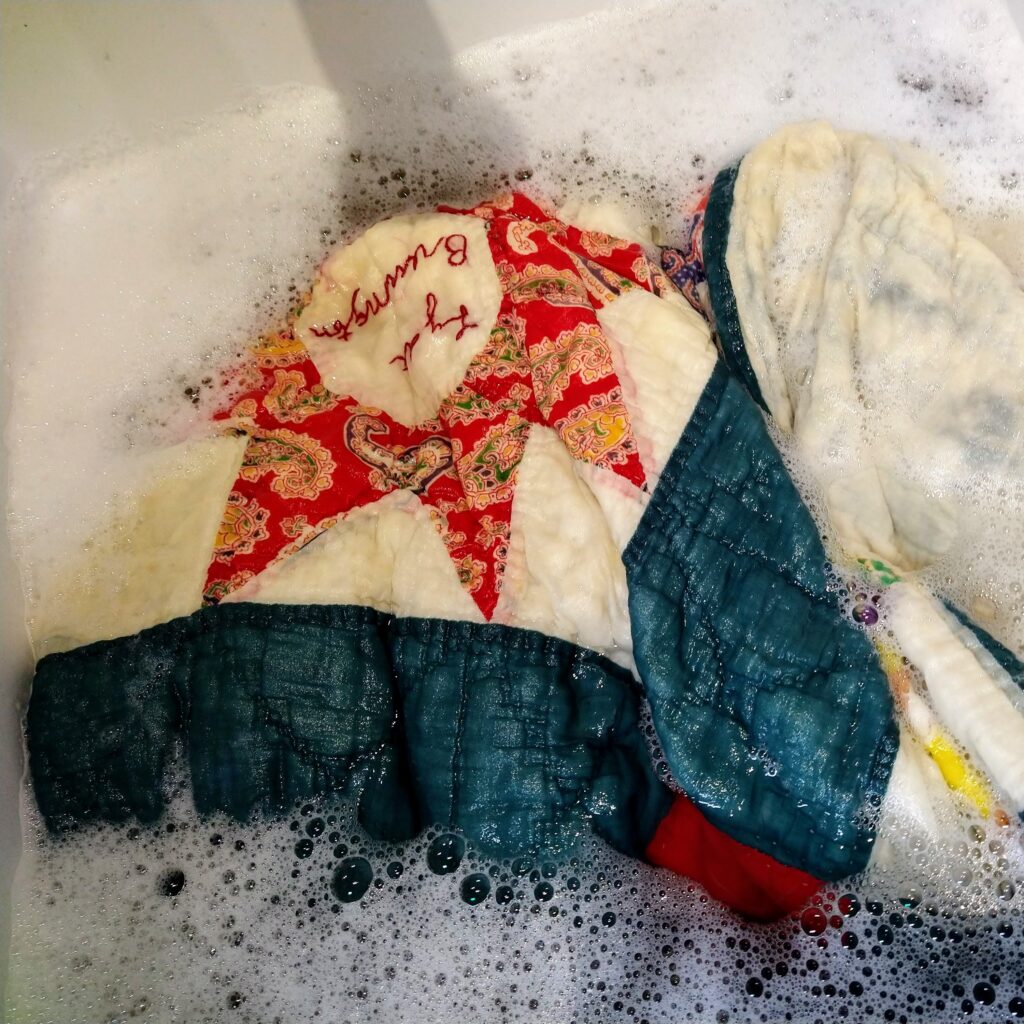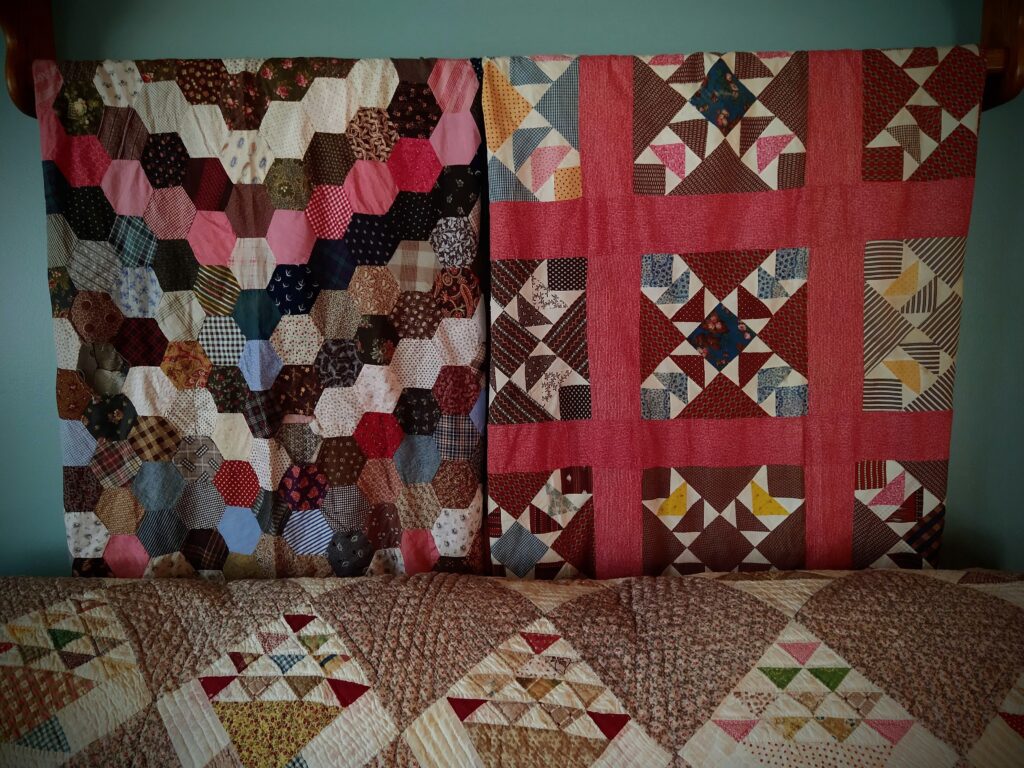Here I will share stories about my current projects/classes, and of course share some quilt history snippets! Be sure to sign up for my email newsletter so I can let you know when the new blog comes out!
explore
welcome to The
SNQ Blog!
History
FMQ
Art QUilts
Classes
Email Newsletter
The study of quilt history relies primarily on the survival of quilts, making preservation critical to the continuation of this field of study. When considering how to preserve the vintage and antique quilts in your collection, remember that aging textiles require an even greater level of care than contemporary quilts having already undergone decades of gradual deterioration.
The first step of preservation comes through the storage of a quilt. Ideally, antique quilts should be stored in a dark and room-temperature environment to avoid the additional stress of light and extreme heat or cold, and contained in acid-free boxes to separate the fibers from surfaces like wood or plastic that could leak chemicals. Frequent refolding is likewise essential to the long-term preservation of the quilt since fold lines can easily become permanent in fragile fibers. Rolling the quilt can also reduce the risk of fold damage.
While on display, it is important to ensure the quilt’s weight is equally distributed. Hanging on a rod, or laying flat on a bed are both safe, although, exposure to light should be carefully monitored to limit additional fading.
The washing of antique quilts is perhaps the most challenging, and risky aspect of caring for antique quilts. Washing is not needed for preservation and because of the many risks, is not advised unless absolutely necessary. If you are considering washing an antique quilt, first be sure of its colorfastness. Many quilts have been irrevocably damaged through washing unstable dyes, which could wash out, or perhaps even worse, bleed into other areas of the quilt. Also, consider the quilt’s condition. Sometimes just the pressure of water is enough to break the worn fibers on a tattered quilt. The actual washing of the quilt should be done completely by hand, with limited chemicals and thorough rinsing. After it is washed, gently squeeze the quilt to remove the excess water, do not wring the quilt as wet fibers are the most fragile. The quilt should then lay flat to air dry, this can be done outside if protected by white cloth on either side.
Proper care of antique quilts is not simple and varies with each individual quilt and its condition, but such preservation is what allows for greater historical discoveries and inspiration to occur.

